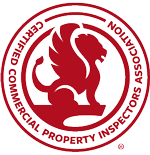Goal
The goal of this course is to teach commercial property inspectors how to inspect commercial kitchens found in restaurants and other commercial cooking operations.
Objectives
Upon successful completion of this course, the student will be able to:
- describe and use the ComSOP inspection procedure for cooking areas;
- distinguish between Type I and Type II exhaust hood systems and their related features;
- identify, inspect, and report on defects related to the following systems and components:
- Type I exhaust hoods
- Type II exhaust hoods
- Exhaust ducts and fans
- Up-blast fan
- Utility set fan
- In-line fan
- Make-up air unit
- Kitchen sinks
- Triple-basin sink
- Handwash sink
- Service sink
- Grease traps
- Grease interceptors
- Fire extinguishing equipment
- Fire suppression systems
- Manual actuation devices
- Fire extinguishers
- assess mechanical, electrical, plumbing, and appliances in commercial kitchens; and
- describe key airflow conditions in commercial kitchens.
Overview
This course teaches students about the critical systems and components in a commercial kitchen that ensure safe conditions for buildings and their occupants. There are unique elements and considerations for the cooking area in commercial buildings that inspectors must understand to perform comprehensive inspections. This course will set the inspector up for success covering everything from determining insurance needs to assessing and reporting on building conditions.
Essential Framework
In the first section, students will learn about different types of commercial kitchens and their applicableness to Section 6.5.13 Cooking Area of the International Standards of Practice for Inspecting Commercial Properties (ComSOP). It reviews how to use this section of the ComSOP and gauge a space to best prepare for an inspection through locating its defining features. Other codes and standards include the International Mechanical Code (IMC), National Fire Protection Association (NFPA), and general regulations covering hoods and fire protection in kitchens.
Commercial Kitchen Exhaust Systems
The next section covers the systems and general design of exhaust systems in commercial kitchens. The student will learn how to distinguish between and inspect Type I and Type II hoods, as well the ducts serving them. The student will also learn about several different exhaust fans and exhaust termination clearances and other requirements.
Appliances and Other Kitchen Components
Students will learn about the most common appliances in commercial kitchens and how to distinguish between grease-producing and non-grease-producing appliances to properly set up kitchens for safe conditions. The course reviews how to use this information to provide clients with an appliance inventory.
Plumbing, Electrical, and HVAC in Commercial Kitchens
In this section, the student will learn how to apply other sections of the ComSOP, like the plumbing, electrical and other HVAC, to elements in commercial kitchens. The course reviews plumbing fixtures and importance of backflow prevention devices, and addresses special electrical conditions to consider during the walk-through survey. The HVAC portion reviews unique airflow factors for commercial kitchens, including the presence of make-up air units. Students will learn how to inspect and report on mechanical equipment and devices, like make-up air units, grease traps, and grease interceptors.
Commercial Kitchen Fire Extinguishing Equipment
Students will learn about the importance of fire safety in commercial kitchens through a deeper understanding of fire-protection features. The primary fire-protection features covered are fire suppression systems, manual actuation devices, and fire extinguishers. Inspection tips and common defects are reviewed for each.
Inspection checklists for specific systems and the kitchen as a whole are included.
Details
- Estimated Hours: 9.6 hours
- Format: On-demand, self-paced with readings, images, and videos
- Word Count: 20,000
- Length of Video(s): 2 hours
- Quiz Questions: 65
- Final Exam Questions: 55
- Included Materials: Study Guide, inspection checklists, supplemental readings, and downloadable Certificate of Completion
- Authors: Britt Treece, Rob Claus, and Maggie Aey


